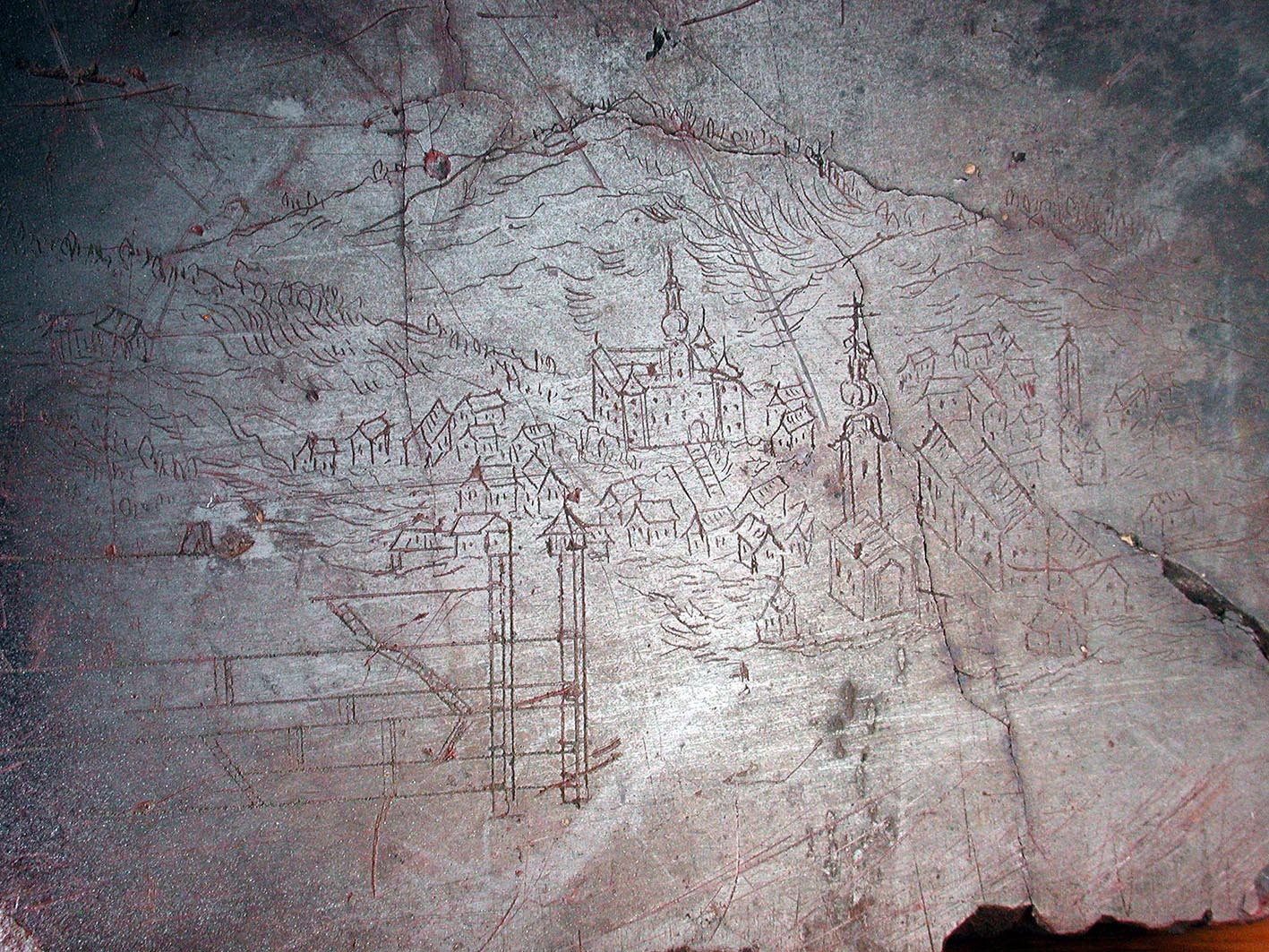Mercury is the only metal that exists in liquid state under normal conditions on Earth’s surface: (20 °C, 101.3 kPa). Due to its liquid aggregate state, high density and metallic lustre, it was highly sought after in the past, since these and other properties made it extremely useful in science, technology and culture.
Mercury can occur in either native elemental form or combined with sulphur into cinnabar. There are quite a lot of deposits of mercury in Slovenia, since the majority of its territory lies in the Mediterranean wider area, which in tectonic terms is part of the Alpine-Himalayan belt. In the past, more than 200 million years ago, very hot molten rock flowed through deep faults and precipitated mercury and cinnabar at or just below the surface.
Slovenia’s largest mercury deposit is in Idrija. It was discovered more than 500 years ago. Initially, prospectors simply dug holes in the ground and looked for drops of native elemental mercury. Soon the mineral ore of cinnabar was also discovered and from it, mercury was extracted on the spot in special mounds made of alternating layers of ore and wood. By burning the wood, temperature in the mound rose high enough for mercury to vaporise. Its vapours were captured and let to cool so that the mercury condensed in its pure form. Later they refined the process and started to extract mercury in retorts. These are large clay jars filled with crushed ore, placed in the ground and covered with wood. Finally, mercury extraction process was moved to specialised furnaces and was no longer done in nature.
Today there are many remains of former extraction sites around Idrija. Besides the ore itself, plenty of water and wood was available in the vicinity, which made the town an ideal location for large-scale extraction operation. After more than five hundred years of operation, the mine is currently being shut down, and the heritage of mercury was added on the UNESCO World Heritage List.


